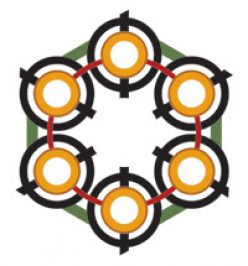
Background: In late 2017, Erowid Center again began sponsoring the Shulgin Archiving project. We’ve made a lot of progress in the last twelve months. Keeper Trout has been doing most of the scanning and indexing work. The materials in the archive are primarily focused on research and data collection about the chemistry, pharmacology, and use of psychoactive plants and chemicals.
But Sasha had a penchant for collecting absurd, silly, disturbing, and bizarre published materials, including Drug War nonsense, weird drug-related advertisements, and other oddities.
One such item that was recently uncovered is an editorial from the October 21, 1967 issue of the highly-respected peer-reviewed “scientific” journal, Nature. The editorial is titled “Hallucinations to Order”.

The unnamed author, which implicitly makes this authored by the editorial staff of the journal, is responding to an article published a few months earlier, “Some New Behaviour-disrupting Amphetamines and their Significance” by Smythies et al, which explores the topic of substituted amphetamines and their relative hallucinogenic potential.
The editorial opens with a frightened, inaccurate, anachronistic, and telling rant:
One of the most alarming features of the drug LSD is that it can be made in the laboratory. In other words, there is no natural physical limitation of the scale on which, in suitably bizarre circumstances, it could be supplied to the public. It follows that those who are concerned to see that the use of drugs is controlled by legislation are at least a little nonplussed by the appearance of synthetic processes for manufacturing drugs which were originally derived from natural sources and, more especially, by the application of synthetic processes to the design of new drugs. Although it will be a long time before the flower children and their like would be able to synthesize their own psychomimetic agents, it is entirely proper that there should now be considerable anxiety about problems of control.
This bizarre little hysterical opinion piece includes the strange gem: “Although it will be a long time before the flower children and their like would be able to synthesize their own psychomimetic agents […]”. As of the date of publication of this issue of Nature (October 1967), the so-called “flower children” were not only “synthesizing their own psychotomimetic agents”, but were doing so at a scale and efficiency that could be described as “awe-inspiring”.
By October 1967, Nick Sand, Tim Scully, Owsley Stanley, and others had already set up, broken down, and moved their high-volume LSD production labs several times. This is documented not only in biographies and books, but also in contemporaneous testimony from law enforcement agents in criminal investigations and prosecutions. The complex issues related to the potency of LSD and its control were not only widely discussed, but were part of the reasoning for criminalizing these “dangerous drugs” in 1967.
It is worth pointing out that the journal Nature was at the time (and for many years after) a key part of the machinery generating anti-drug hysteria and “scientific” public fears, such as the completely false claim that LSD caused chromosome damage.
As the Shulgin Archiving project continues to progress, we will be providing access to an indexed collection, but will also point out individual curiosities with commentary. We hope that reminding people of the absurd history of the Drug War and the persistent presence of confused stories supporting it and presented as “scientific” or “news” might help society limit its repetition of the worst type of errors.
